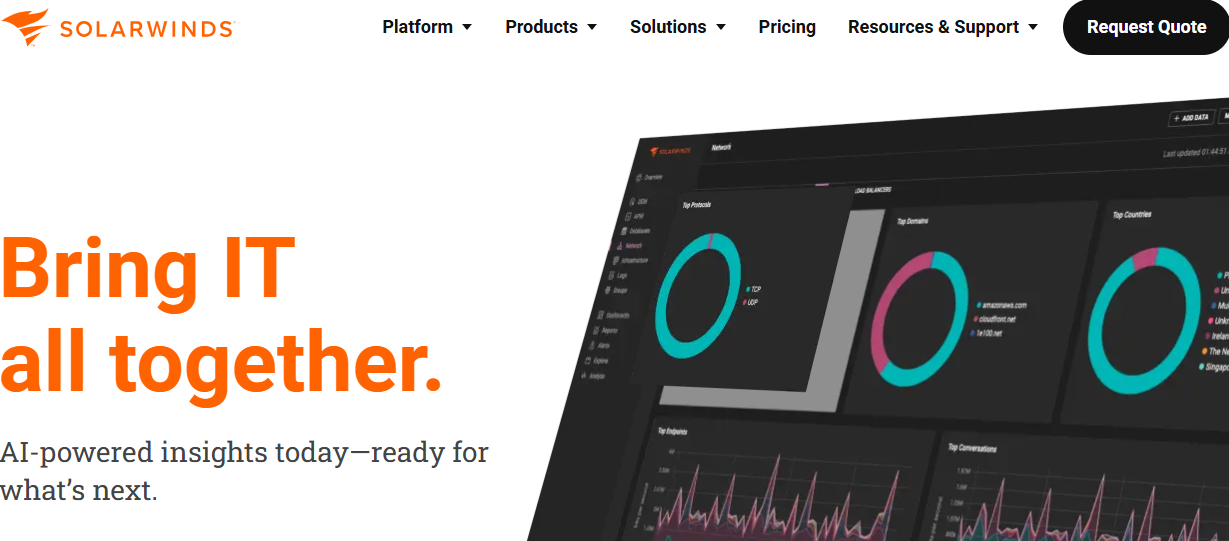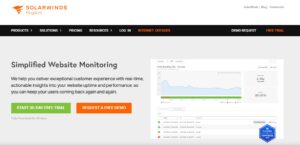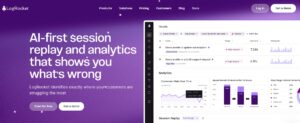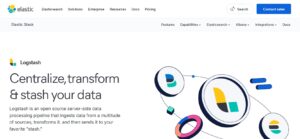Highlight.io is an open-source observability platform known for its real-time session replays, full-stack error tracking, distributed tracing, and native support for OpenTelemetry (OTEL). However, the platform lacks enterprise-grade features such as SLO-based alerting, built-in anomaly detection, and fine-grained RBAC. The APM market is projected to reach $12 billion by 2035, highlighting the increasing need for advanced monitoring solutions.
CubeAPM is the best alternative to Highlight. CubeAPM supports smart sampling, flat $0.15/GB pricing, and complete MELT visibility including RUM, synthetics, infra metrics, and backend trace. It also offers self-hosted deployment, 800+ integrations, and enterprise-ready features like SLO-based alerting.
In this article we’ll explore the top 7 alternatives to Highlight.io—including CubeAPM, Datadog, New Relic, Dynatrace, Sentry, Coralogix, and Better Stack evaluating each based on key features, pricing, pros and cons, and use cases.
Table of Contents
ToggleTop 7 Highlight.io Alternatives
- CubeAPM
- Dynatrace
- Coralogix
- DataDog
- New Relic
- Amazon CloudWatch
- Solarwinds
Why Look for Highlight.io Alternatives?
Although Highlight.io is a strong tool for frontend-backend observability correlation, several common limitations are pushing teams to evaluate alternatives:
1. High Cost when Scaling
High cost is a major issues, especially in high traffic environment. The prices can be unpredictable which is major hurdle for startups and business running on tight budget.
For example, Highlight.io’s Business plan starts at $800/month. A midsize team ingesting 100K session replays, 1M errors, 1B logs, and 500M spans could see total costs rise above $4,000/month, depending on ingestion rates and overage tiers.
However, for CubeAPM there is only flat-base pricingof $0.15/GB, which means for 10TB of data inested which is equivalent to Highlight.io pricing, a midsized company will pay around $1500 per month.
2. Limited Enterprise Readiness
Highlight.io lacks mature enterprise features like audit logging, SSO/SAML, SLO-based alerting, or compliance-grade access controls. This becomes a major blocker for teams in regulated industries like finance, healthcare, or government.
3. Basic Sampling Controls
The platform uses fixed sampling and basic filtering, which makes it difficult to prioritize anomalies or capture rare events in high-traffic environments. There is no support for tail-based or dynamic sampling strategies.
4. Support Gaps
Highlight’s support model is primarily community-driven via Discord and GitHub. For mid-to-large organizations needing guaranteed SLAs and real-time escalation paths, this is often insufficient.
5. Limited Anomaly Detection and Automation
Unlike mature platforms that offer AI/ML-based anomaly detection and automated workflows, Highlight.io still requires manual monitoring and doesn’t provide predictive alerting or runbook integrations.
6. Cloud-Native Infra Monitoring Still Basic
While Highlight offers basic infrastructure-level insights, it lacks deep Kubernetes or cloud-native observability capabilities (e.g., service maps, pod-level metrics, etc.), making it less viable for complex, containerized environments.
7. Vendor Ecosystem & Integrations
Integration with broader DevOps toolchains (e.g., Opsgenie, PagerDuty, Terraform, SLO platforms) is limited compared to tools like Datadog, CubeAPM, or Dynatrace.
Criteria for Suggesting Highlight.io Alternatives
To ensure teams find the right observability tool for their needs, we’ve evaluated alternatives to Highlight.io based on the following nine criteria:
1. Native OpenTelemetry (OTEL) Support
OpenTelemetry is now the industry standard for telemetry data collection. Tools that offer native OTEL support make it easier for teams to avoid vendor lock-in and standardize instrumentation across languages and services. A strong alternative to Highlight.io must allow seamless ingestion of OTEL-based traces, metrics, and logs, ideally with prebuilt exporters, minimal translation overhead, and full semantic support.
2. Full MELT Stack Coverage (Metrics, Events, Logs, Traces)
Modern observability goes beyond just tracing or error monitoring—it requires unified visibility across the entire MELT stack. A proper alternative should provide end-to-end coverage across application metrics, distributed traces, infrastructure logs, and event-based alerts. This unified view helps teams reduce MTTR, correlate incidents faster, and avoid context switching between disconnected tools.
3. Smart Sampling Strategies (Tail-based or Dynamic Sampling)
Highlight.io currently lacks advanced sampling strategies like tail-based or anomaly-aware sampling. In contrast, top-tier observability platforms offer dynamic sampling to ensure rare and anomalous events are preserved—even during peak load—while reducing redundant noise. Tail-based sampling also allows tools to make smarter decisions after span completion, capturing slow transactions, outliers, or error-prone sessions automatically.
4. Flexible Deployment Models (SaaS + Self-hosted)
Teams operating in regulated industries or with strict data residency requirements need deployment flexibility. A strong Highlight.io alternative should support both managed SaaS and self-hosted/on-premises options—including air-gapped or private cloud setups. This allows enterprises to stay compliant with HIPAA, GDPR, or SOC 2 while retaining control over sensitive telemetry data.
5. Advanced Alerting & Automation (SLOs, Routing, Deduplication)
Highlight.io’s alerting capabilities are basic and not suited for complex NOC or on-call workflows. An ideal alternative should support SLO-based alerting, noise suppression, deduplication, and routing by ownership or severity. Additionally, it should offer integrations with tools like PagerDuty, Opsgenie, and Slack to power real-time incident workflows and reduce alert fatigue.
6. Scalability and Performance at High Cardinality
As applications scale, observability platforms must handle millions of spans, high-cardinality tags, and multi-tenant setups without performance degradation. The right alternative to Highlight.io should be designed for scalable ingestion, low-latency queries, and efficient storage across petabytes of data. Engineering teams need consistent performance, whether troubleshooting a small service or analyzing entire microservices fleets.
7. Transparent & Predictable Pricing
One of the key concerns with Highlight.io is the challenge in understanding and predicting pricing at scale. Alternatives should provide clear, usage-based pricing without hidden ingestion fees, per-user charges, or add-on penalties. Teams need visibility into what they’re paying for—whether that’s per GB of telemetry, per session, or per host—so they can forecast budgets confidently.
8. Support & SLAs
Community support can be helpful, but for business-critical systems, teams often need dedicated support with SLAs. Ideal alternatives should offer guaranteed response times, Slack or email-based support, onboarding assistance, and technical account managers (TAMs) for enterprise users. Fast, reliable support is essential during high-stakes incidents or large-scale rollouts.
Highlight.io Overview
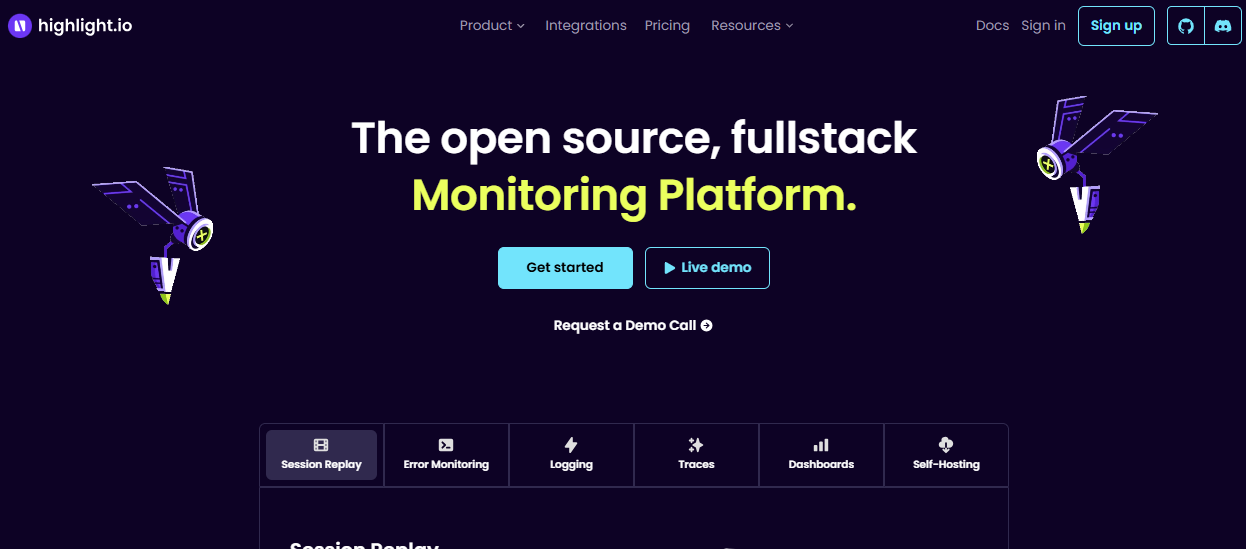
Known for:
Highlight.io is primarily known for providing developers with a full-stack observability experience by connecting frontend session replays with backend traces and logs. It is widely adopted by modern web teams looking to understand user behavior, capture frontend performance issues, and trace backend bottlenecks—all from a single timeline. Highlight.io’s tight integration with OpenTelemetry makes it especially appealing for teams seeking an open-source and developer-friendly alternative to tools like LogRocket, Sentry, and DataDog.
Standout Features:
- Session Replay with Contextual DevTools
Highlight.io records user sessions and overlays browser DevTools information, including network requests, console logs, and state changes—providing rich context for debugging. - End-to-End Tracing with OTEL
With built-in support for OpenTelemetry, Highlight.io allows teams to trace requests across microservices and correlate them with frontend interactions. - Real-Time Event Timeline
Combines RUM, logs, and traces into a unified chronological view to accelerate root cause analysis during incidents.
Key Features:
- Real User Monitoring (RUM):
Measures frontend performance metrics like Time to First Byte, LCP, and interaction delay across actual user sessions. - Error Monitoring (Frontend & Backend):
Captures JavaScript exceptions, API errors, and server-side faults with full stack traces and contextual metadata. - Log Ingestion:
Collects logs from browser and server environments and correlates them with trace IDs and session data. - Distributed Tracing:
Native OpenTelemetry support enables visibility across backend services with span visualizations and custom attributes. - Self-Hosting Support:
Provides installation options via Docker Compose or Kubernetes for teams needing control over data storage and compliance.
Pros:
- Seamless correlation between frontend replays, logs, and backend traces
- Intuitive interface built for developers and product engineers
- OpenTelemetry-native instrumentation for backend tracing
- Self-hosted deployment available under open-source licensing
- Integrated browser DevTools context within session replays
Cons:
- No tail-based or intelligent sampling—limited to basic filtering
- Missing enterprise-grade features like SLO alerting, anomaly detection, and role-based access control
- Relies on community support with no official SLAs or premium assistance
- Lacks deep integrations with on-call management tools like PagerDuty or Opsgenie
- Limited dashboarding and alerting capabilities compared to platforms like Datadog or CubeAPM
Best For:
Highlight.io is well-suited for frontend-focused teams, startups, and solo developers building SPAs or modern web applications with React, Vue, or Next.js. It’s ideal for teams that prioritize visual debugging and need a quick, unified view of client-side and server-side behavior without adopting a complex enterprise observability stack.
Pricing & Customer Reviews:
- Pricing:
- Free Plan: Includes up to 500 sessions and 1,000 errors per month
- Paid Plans: Pay-as-you-go: $50/month ; Business starts at $800/month, Enterprise which is custom-based
- Customer Ratings:
- Highlight.io is rated 4.5/5 on G2
- Users appreciate its clean UI and seamless frontend-backend observability
- Some reviewers note a steep learning curve and limitations in enterprise-grade alerting and support models
Top 7 Highlight.io Alternatives
1. CubeAPM

Known for:
CubeAPM is a comprehensive, OpenTelemetry-native APM platform built with a focus on cost efficiency, trace sampling intelligence, compliance support, and ultra-fast ingestion. It caters to engineering teams seeking full-stack observability with predictable pricing and deployment control—without locking into inflexible architectures or vendor fees.
Its Smart Sampling engine dynamically retains only the most relevant traces—such as those linked to latency spikes or error anomalies—cutting storage usage by as much as 70% while preserving high-value data. With flat pricing and no per-user or host-based billing, teams can aggressively scale telemetry collection without fear of billing surprises.
CubeAPM supports both cloud-hosted and self-hosted models, offering Datadog-like performance, Grafana’s flexibility, and open-source transparency—without the heavy maintenance burden.
Key Features:
Full MELT Stack Support
Native support for metrics, events, logs, and traces—plus RUM, synthetics, and error tracking—integrated into a single dashboard.
Smart Sampling
Automatically prioritizes high-value traces using contextual logic, unlike platforms that store everything or rely on basic filters.
Deployment Control
Self-host in your own cloud or on-prem to meet GDPR, HIPAA, or India’s DPDP requirements—no telemetry leaves your infrastructure.
Fast Setup & Agent Compatibility
Supports existing agents from Datadog, OTEL, Prometheus, and New Relic—allowing for rapid migration with minimal rework.
Standout Features:
- $0.15/GB flat-rate pricing
- Wide integration ecosystem, 800 + integrations
- AI-driven Smart Sampling for trace optimization
- Direct Slack support with engineering
- Prebuilt dashboards for AWS, Kubernetes, Lambda, RDS, and more
- SaaS and on-premise hosting options
Pros:
- Native OTEL with full-stack visibility
- Large integration ecosystem, +800 integrations
- No cloud egress costs
- Predictable pricing model with no hidden charges
- 2–4x faster telemetry ingestion
- Ideal for compliance-sensitive workloads
- Auto-instrumentation for cloud-native tech
Cons:
- Not suited for teams looking for off-prem solutions
- Strictly an observability platform and does not support cloud security management
Best for:
Startups, growing engineering teams, and cost-conscious enterprises needing observability without overpaying or losing control over data residency.
Pricing & Customer Feedback:
Pricing: $0.15/GB data ingestion (flat, no per-user/host fees)
Rating: 4.7/5 (based on pilots, user feedback, and Slack community insights)
Praise for: Developer-first UI, transparent cost model, effective sampling
Criticism: Smaller ecosystem and plugin library compared to Datadog
CubeAPM vs Highlight.io:
While Highlight.io excels at frontend session replays and full-stack correlation, CubeAPM goes further for production use cases. It delivers full MELT coverage, supports data localization, and offers AI-driven Smart Sampling—making it a better fit for teams handling large-scale backend telemetry, compliance needs, or tight budgets. Highlight.io lacks these enterprise-grade capabilities, especially in sampling strategy, backend scaling, and deployment flexibility.
2. Dynatrace
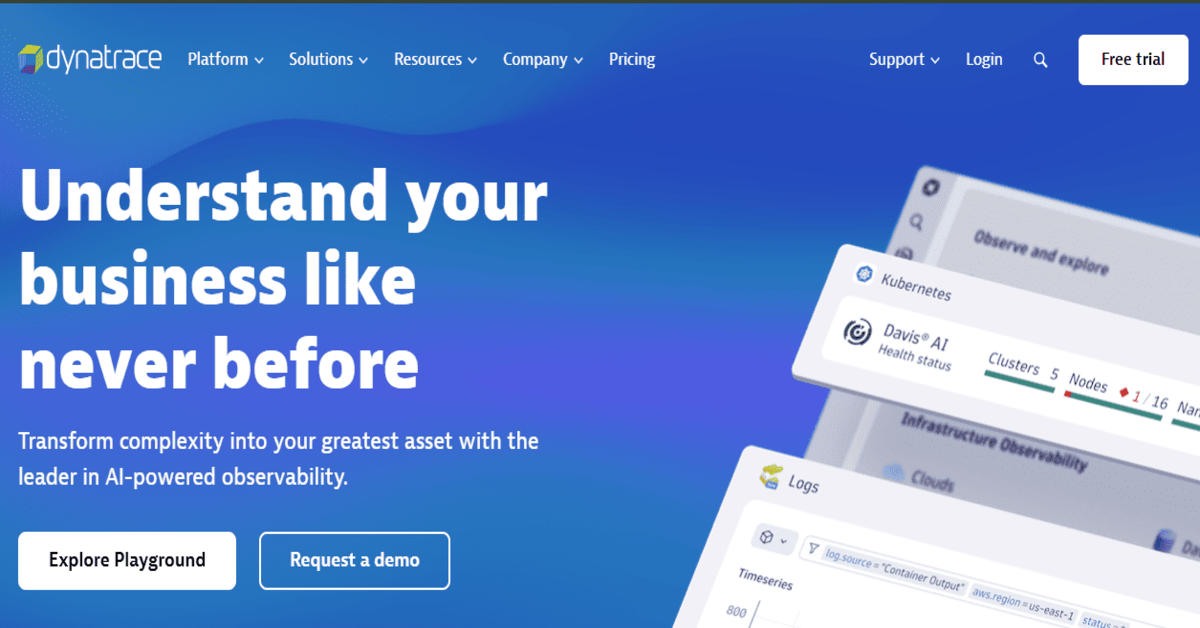
Known for:
Dynatrace is an enterprise-grade observability and security platform combining infrastructure monitoring, APM, and AI-driven analytics. Its standout Davis AI engine automates anomaly detection and root cause analysis, making it a preferred choice for large-scale microservices and multi-cloud workloads.
Key Features:
Davis AI Engine
Anomaly detection and automated correlation across layers to reduce alert noise and surface root causes.
OneAgent Deployment
Auto-discovers containers, services, and serverless workloads with a single agent—minimizing setup overhead.
Integrated Security Monitoring
Offers runtime application protection (RASP) and vulnerability detection alongside observability.
Cloud-native Automation
Deep integration with AWS, Azure, and Kubernetes for autoscaling and intelligent workload placement.
Standout Features:
- 100% transaction capture (no sampling)
- Unified view of user experience, app health, and infrastructure
- Auto-instrumentation across services
- AI-generated baselines for performance
Pros:
- Highly scalable and enterprise-ready
- No trace sampling; full fidelity
- Deep AI/ML-powered insights
- Comprehensive coverage across tech stack
Cons:
- High cost and pricing complexity
- Steep learning curve
- Proprietary agents can lead to vendor lock-in
Best for:
Large-scale enterprises running multi-cloud, high-volume workloads that require strong automation, end-to-end visibility, and security compliance.
Pricing & Customer Feedback:
- Pricing: ~$57.60/month per 8GiB host
- Rating: 4.5/5 on G2
- Praise for: AI features, full visibility, cloud-native integrations
- Criticism: Cost, complexity, vendor lock-in
Dynatrace vs Highlight.io:
Highlight.io is lightweight and frontend-focused, while Dynatrace is tailored for complex enterprise environments. Dynatrace offers AI-backed root cause detection, 100% transaction fidelity, and security integration—features that are missing in Highlight.io. However, it comes at a much higher price point and operational complexity, making Highlight.io more appealing to smaller teams with simpler observability needs.
3. Coralogix
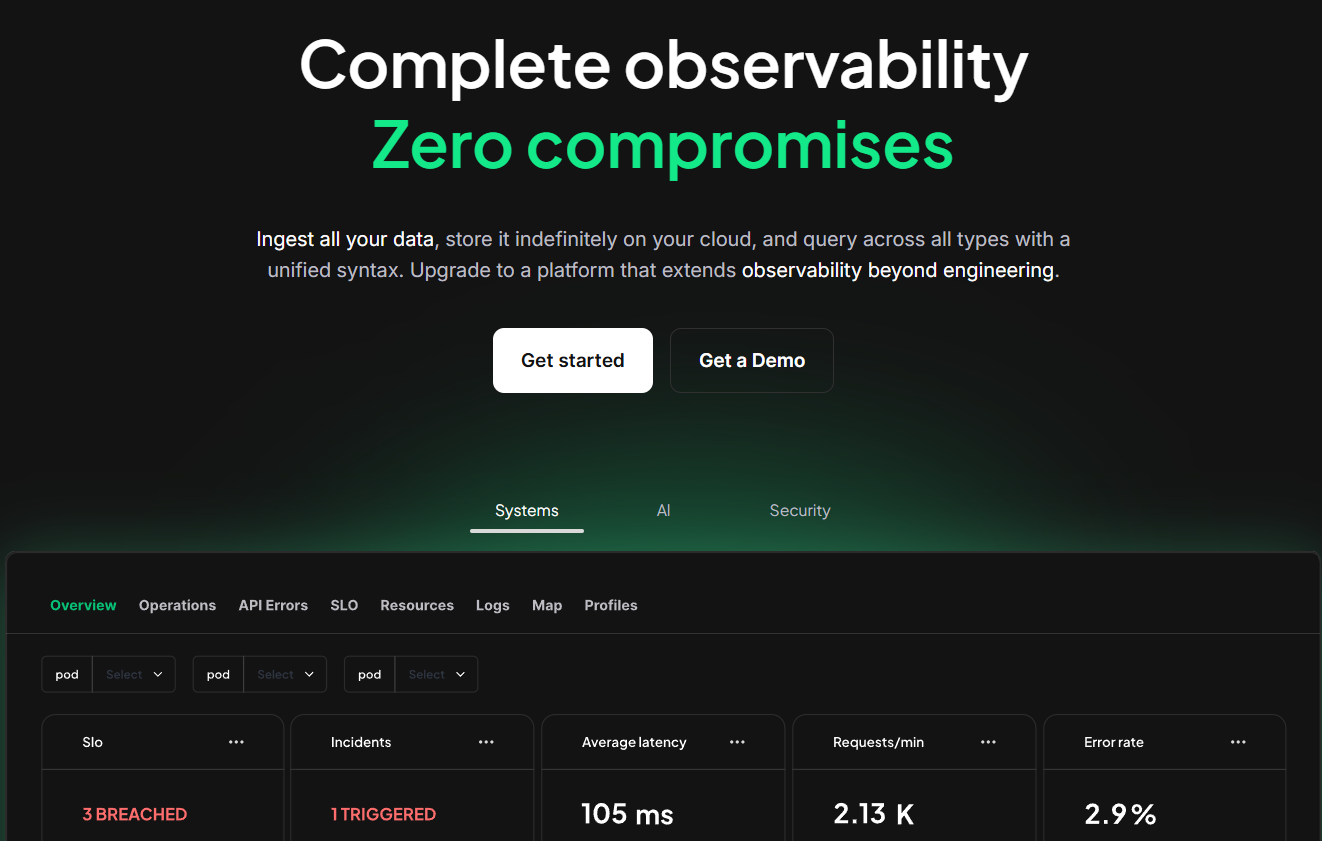
Known for:
Coralogix is a log-first observability platform designed for high-scale telemetry ingestion with cost control at its core. It emphasizes stream-based processing and modular indexing to help DevSecOps teams manage large volumes of logs without overpaying for storage or retention. Its pipeline architecture makes it ideal for teams that need granular control over what to store, what to archive, and what to query in real time.
Key Features:
Streama™ Architecture
Enables ingestion of logs without indexing everything. Teams can query on the fly while keeping most data in cheap cold storage (e.g., S3).
Customer-Controlled Archiving
Telemetry is archived in your own S3 bucket, reducing long-term retention costs. However, data briefly flows through Coralogix’s systems, raising compliance flags for some teams.
Advanced Log Routing and Parsing
Offers pipeline-level control to parse, enrich, and direct data to different destinations based on rules—helping reduce costs during volume spikes.
OpenTelemetry Support
Supports OTEL-based ingestion, though manual configuration is often required to achieve context propagation across metrics, logs, and traces.
Standout Features:
- Smart ingestion pipelines for indexing cost optimization
- Cold storage via S3 with delayed query support
- Modular dashboards for infrastructure and applications
- SOC 2, HIPAA, and GDPR compliance options
Pros:
- Powerful ingestion cost control via log routing
- Strong for archival use cases and long-term audit retention
- Suitable for teams managing terabytes of daily telemetry
- Compliance-aware deployment options
Cons:
- Log-focused; weaker native support for RUM, synthetics, and infrastructure metrics
- No built-in Smart Sampling or trace deduplication
- Cold storage requires egress from Coralogix’s cloud, raising data sovereignty concerns
- Complex configuration requires experienced operators
Best for:
Enterprises managing high log volumes, dealing with long retention policies, or requiring pipeline-level control over telemetry storage and access.
Pricing & Customer Feedback:
- Pricing: Starts at ~$245.55/month (annual billing, feature tiers apply)
- Rating: 4.6/5 on G2
- Praise for: Flexible log pipelines, Streama™ architecture, cost efficiency
- Criticism: Complicated MELT unification, compliance risks due to indirect data flow
Coralogix vs Highlight.io:
Highlight.io delivers a simpler, UI-driven full-stack experience suited for product teams. Coralogix, on the other hand, is engineered for log-heavy use cases where ingestion control is critical. While both support OTEL, Highlight.io provides more frontend visibility and ease of use, whereas Coralogix demands deeper configuration expertise and is better suited for large-scale logging and retention scenarios—not rapid frontend/backend debugging.
4. Datadog

Known for:
Datadog is a cloud-native SaaS observability platform that unifies infrastructure monitoring, APM, logs, RUM, synthetics, and security analytics into a single control plane. It’s widely adopted by DevOps and SRE teams for its rich features, deep integrations, and ability to monitor large, distributed environments.
Key Features:
Infrastructure Monitoring
Collects metrics from hosts, containers, and cloud services.
Distributed Tracing (APM)
Tracks requests across microservices, APIs, and databases.
Log Management
Centralized log collection with powerful filtering and search.
Security Monitoring
Detects threats and policy violations in real-time.
RUM & Synthetics
Measures frontend performance and simulates user journeys.
Custom Alerting
Includes threshold-based, anomaly, and composite alerts.
Standout Features:
- 900+ integrations (AWS, GCP, Docker, Jenkins, etc.)
- Watchdog AI for automated anomaly detection
- Unified platform for MELT + security telemetry
- Enterprise-grade scale and reliability
Pros:
- Full-stack observability with strong cloud-native support
- Excellent dashboarding, alerting, and automation
- Prebuilt integrations accelerate setup
Cons:
- High cost at scale with per-GB, per-user, per-host billing
- Head-based sampling may miss anomalies
- SaaS-only model; no support for self-hosting
- Billing complexity often leads to overages
Best for:
Enterprise teams operating complex, multi-cloud environments with the budget to support premium observability tooling.
Pricing & Customer Feedback:
- APM: $31/host/month
- Infrastructure: $15/host/month
- Logs: $0.10/GB + $1.70/M events (15d retention)
- G2 Rating: 4.4 / 5
- Praised for its power; criticized for unpredictable billing and high cost
Datadog vs Highlight.io (Short Comparison):
While Highlight.io focuses on frontend-to-backend correlation with session replays and simple pricing, Datadog delivers enterprise-grade observability across infrastructure, security, and DevOps workflows. However, Datadog’s usage-based pricing, lack of tail-based sampling, and SaaS-only model make it expensive and less flexible for smaller teams—where Highlight.io offers a more accessible entry point but lacks Datadog’s depth and scale.
5. New Relic

Known for:
New Relic is a mature, full-stack observability platform with strong support across the MELT stack—metrics, events, logs, and traces. Known for its all-in-one interface, powerful agents, and usage-based pricing, it is widely adopted by SRE and DevOps teams looking for quick instrumentation and broad language coverage.
Key Features:
Unified MELT Telemetry via New Relic One
Centralizes telemetry across apps, infra, and user experiences with real-time dashboards, code-level tracing, and anomaly detection.
Auto Instrumentation Agents
Built-in support for Java, Node.js, Python, Ruby, and other major languages makes onboarding fast for most environments.
Visual Service Maps & Tracing
Helps visualize distributed systems and uncover latency issues across services with dependency maps.
OpenTelemetry Ingestion Support
OTEL traces can be ingested, but with limited out-of-the-box support—most workflows still lean on proprietary agents.
Head-based Sampling
Uses static sampling percentages (e.g. 1–5%), which can miss rare edge-case traces unless manually tuned.
Standout Features:
- Comprehensive MELT integration in one dashboard
- Prebuilt alerts, anomaly detection, and SRE workflows
- Real-time insights and code-level diagnostics
- Integrates with major cloud platforms and CI/CD tools
Pros:
- Fast onboarding and auto-instrumentation
- Broad support for infrastructure and application monitoring
- Clean, user-friendly UI
- Solid ecosystem and documentation
Cons:
- Usage-based billing becomes expensive at scale
- Static sampling can drop valuable traces
- No support for self-hosting or air-gapped deployments
- Advanced features often gated behind higher pricing tiers
Best for:
Mid-sized to large organizations needing fast time-to-value, broad agent support, and a SaaS-first observability platform.
Pricing & Customer Feedback:
- Pricing: $0.35/GB ingest + up to $400/user/month for full access
- Free Tier: Includes 100 GB/month ingestion
- Rating: 4.4/5 on G2
- Praise for: Rich UI, fast onboarding, out-of-the-box value
- Criticism: Pricing unpredictability, limited sampling logic, and SaaS-only model
New Relic vs Highlight.io:
Both platforms provide a full-stack experience with tracing and frontend/backend correlation. However, Highlight.io is better suited for frontend-heavy debugging with session replays, while New Relic offers deeper infrastructure and language-level instrumentation. Highlight’s self-hosting and simpler cost structure appeal to dev-focused teams, whereas New Relic brings more enterprise depth—at a premium.
6. Amazon CloudWatch
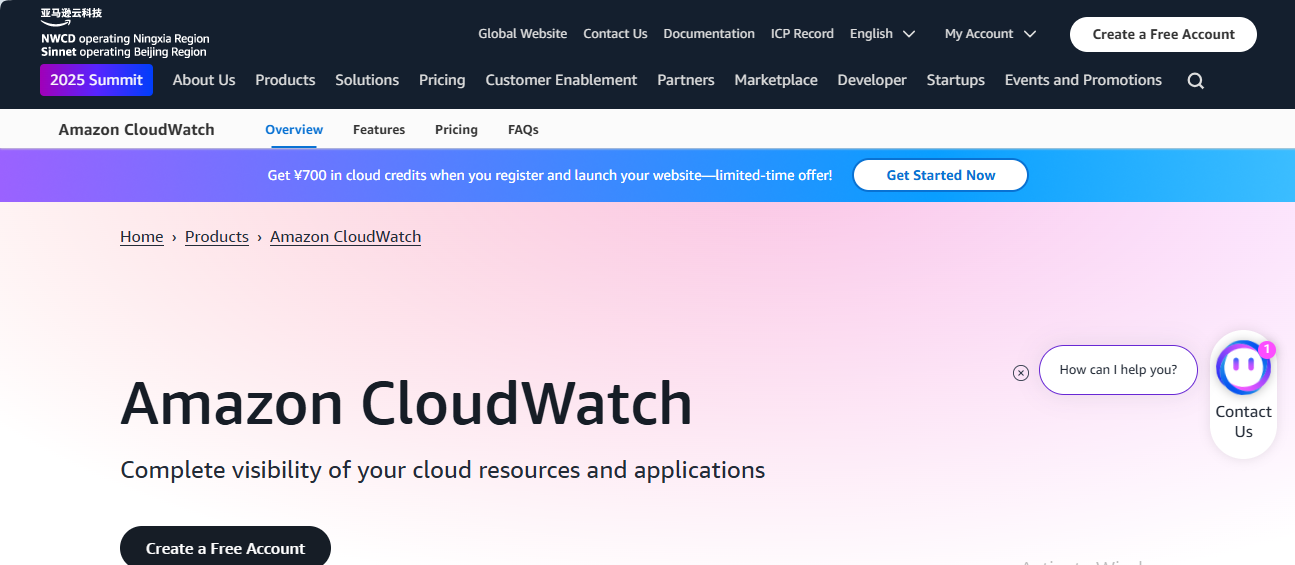
Known for:
Amazon CloudWatch is AWS’s native observability service used to monitor logs, metrics, alarms, and events across cloud resources like EC2, Lambda, ECS, and RDS. It is the default choice for most teams operating inside AWS, with seamless integrations and automation hooks designed specifically for cloud-native environments.
Key Features:
Metrics Collection
Gathers system and application metrics from over 70 AWS services, with support for custom metrics and namespace-based organization.
Log Aggregation & Analysis
Centralized ingestion of application and infrastructure logs, with SQL-like querying and filtering using Logs Insights.
Dashboarding
Visualizes telemetry through customizable dashboards using widgets, time-series graphs, and grouped metrics.
Alarming & Notifications
Configurable alarms based on thresholds, anomaly detection, or composite metrics that integrate with SNS, Lambda, and auto-scaling policies.
EventBridge Integration
Sends real-time events to AWS EventBridge for routing, automation, or triggering workflows across the AWS ecosystem.
Optional RUM & Synthetics
Provides Real User Monitoring and synthetic canary testing for frontend availability and experience metrics (billed separately).
Standout Features:
- Tight AWS Integration: Built-in support for telemetry from services like EC2, S3, DynamoDB, and Lambda, with no extra setup.
- Contributor Insights: Helps detect top contributors to latency spikes or error rates, such as a noisy IP or misbehaving API endpoint.
- Application Signals (APM-lite): Offers lightweight distributed tracing for some AWS-native services (e.g., Lambda, API Gateway).
- IAM-Based Access Controls: Uses AWS Identity and Access Management for fine-grained, role-based data access.
- Event-Driven Automation: Connects metrics and logs with infrastructure actions via CloudWatch alarms and EventBridge.
Pros:
- Seamless native monitoring for AWS services
- Highly scalable with strong SLAs
- IAM support for granular user/data access
- Event-driven automation capabilities
- Requires no agents for many AWS-native resources
Cons:
- Complex and fragmented pricing model (per metric, log, API call, dashboard, etc.)
- Limited dashboarding and visualization tools compared to Datadog or CubeAPM
- Steep learning curve, especially for configuring alarms or OTEL integrations
- No tail-based or smart sampling
- No self-hosting or cross-cloud observability support
Best For:
Teams deeply embedded in AWS infrastructure who require basic telemetry, alerting, and automation, but don’t need full-stack tracing, frontend replay, or OpenTelemetry-first workflows.
Pricing & Customer Feedback:
- Logs Ingestion: $0.50/GB
- Logs Storage: $0.03/GB/month
- Custom Metrics: $0.30/metric/month (first 10,000)
- Application Signals (APM-lite): Starts at $0.35/GB for first 10TB
- RUM: ~$1 per 100,000 events
- Synthetics: $0.0012/run
- G2 Rating: 4.5 / 5
Praised For: Reliability, deep AWS integrations, automation hooks
Criticized For: Billing complexity, sluggish UI, and limited front-end or full-stack visibility
Amazon CloudWatch vs Highlight.io
CloudWatch excels at monitoring AWS infrastructure and automating responses through alarms and EventBridge, but it falls short in frontend observability, session replay, and full-stack tracing. Highlight.io, on the other hand, delivers a stronger developer experience with built-in replay, RUM, and backend trace correlation—making it better suited for product teams focused on user-facing applications. For AWS-centric DevOps, CloudWatch is efficient; for frontend-backend visibility, Highlight.io provides better insight in a more approachable UI.
7. SolarWinds
Known for:
SolarWinds is a long-standing vendor in IT monitoring and infrastructure management, recognized for its deep capabilities in network performance, server health, and database diagnostics. It’s widely used by enterprises, government agencies, and regulated industries for monitoring traditional environments through tools like Network Performance Monitor (NPM), Server & Application Monitor (SAM), and the broader SolarWinds Observability suite. Its strength lies in on-premise and hybrid infrastructure visibility, backed by decades of enterprise IT adoption.
Key Features:
Infrastructure & Network Monitoring
Products like NPM and SAM provide detailed insight into server uptime, hardware metrics, bandwidth usage, and SNMP-based network visibility.
Database Performance Analyzer (DPA)
Specialized database monitoring for Oracle, MSSQL, and MySQL with visual query plans, wait-time analysis, and historical performance tracking.
IT Service Management (ITSM)
Includes built-in helpdesk workflows, ticket routing, SLA monitoring, and technician workload tracking through its Service Desk product.
Incident Management & Alerting
Offers centralized alert rules, role-based notifications, and integrations with tools like Microsoft Teams and Slack for real-time escalation.
Self-Hosted Deployment
Full on-premise install options for organizations requiring air-gapped, compliance-ready setups—appealing to sectors with strict data sovereignty mandates.
Standout Features:
- Modular Suite of Tools: Covers everything from monitoring and service desk to incident response and database health.
- Network-Centric Capabilities: Mature SNMP monitoring, NetFlow traffic analysis, and network topology mapping.
- Hybrid Visibility: Designed to monitor both cloud and legacy infrastructure in mixed environments.
- Custom Dashboards & Reporting: Allows threshold-based alerts, baseline comparisons, and detailed usage reporting.
- ITSM + Observability Integration: Brings asset tracking and incident workflows under the same umbrella.
Pros:
- Strong visibility into traditional IT infrastructure and hybrid networks
- Wide toolset covering monitoring, ITSM, databases, and ticketing
- On-premise deployment options for compliance and data control
- Mature SNMP and NetFlow tools for detailed network analytics
Cons:
- Pricing is modular and adds up quickly with more nodes, databases, or users
- No native OpenTelemetry support
- High operational complexity due to fragmented tooling and interfaces
- User interface is dated and often criticized for being unintuitive
- Support response times are slow—reviewers mention multi-day delays
- No smart or tail-based sampling; noise filtering is limited
- Lingering trust concerns from the 2020 Orion breach
Best For:
Enterprises with large-scale, on-premise infrastructure, especially in regulated industries. Ideal for teams focused on asset discovery, infrastructure health, and service desk workflows rather than unified, modern observability stacks.
Pricing & Customer Feedback:
- Monitoring: $6/node/month
- Database Monitoring: $117/database/month
- ITSM: $39/technician/month
- Incident Response: $9/user/month
- Startup Estimate: ~$4,000/month for 40 nodes, 5 DBs
- Mid-size Estimate: ~$8,000/month for 150 nodes, 25 DBs, 20 techs
- G2 Rating: 4.4 / 5
- Praised for: Feature breadth, legacy infra visibility
- Criticized for: Poor UI, weak OTEL integration, high cost, slow support
SolarWinds vs Highlight.io
SolarWinds excels in traditional infrastructure and network monitoring, offering detailed visibility across servers, databases, and IT assets—especially for on-premise setups. In contrast, Highlight.io is built for modern engineering teams focused on application-layer observability with session replays, frontend insights, and backend traces. While SolarWinds is well-suited for IT operations and regulated industries, Highlight.io delivers a cleaner UX and is more relevant for dev-centric teams that prioritize full-stack debugging and cost transparency.
Conclusion: Choosing the Right Highlight.io Alternative
As observability needs evolve, engineering teams are increasingly moving beyond frontend-focused tools like Highlight.io in search of platforms that deliver deeper telemetry coverage, smarter data control, and enterprise-grade readiness. While Highlight.io provides valuable session replays and trace correlation for full-stack debugging, its limitations—such as basic sampling, lack of SLO-based alerting, limited enterprise support, and SaaS-first deployment—can become blockers for growing teams.
CubeAPM emerges as a compelling alternative, combining OpenTelemetry-native ingestion, Smart Sampling, and flat $0.15/GB pricing with support for self-hosting and compliance-first deployments. For teams that need to scale cost-effectively without losing signal quality or control over their data, CubeAPM provides both performance and predictability.
Other tools like Dynatrace, New Relic, and Splunk AppDynamics cater to enterprise workloads, while platforms like Coralogix offer granular log routing and cost control. The right choice ultimately depends on your use case—whether it’s frontend observability, backend scale, compliance, or cost-efficiency.

